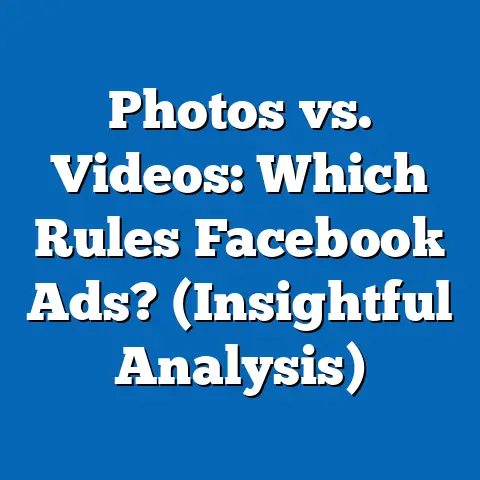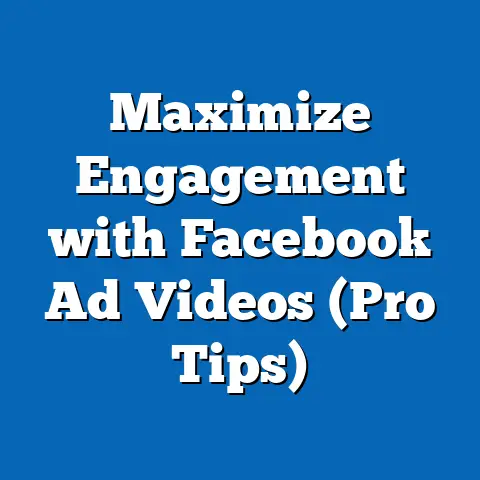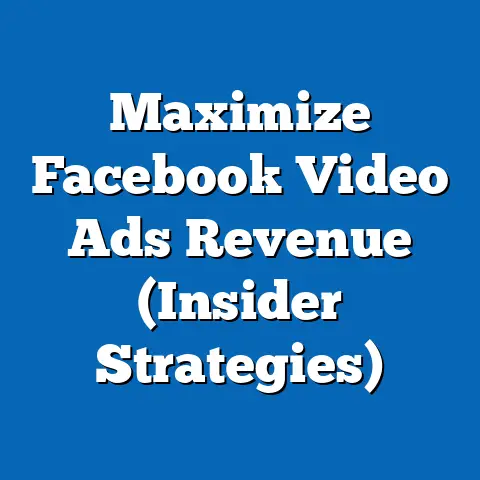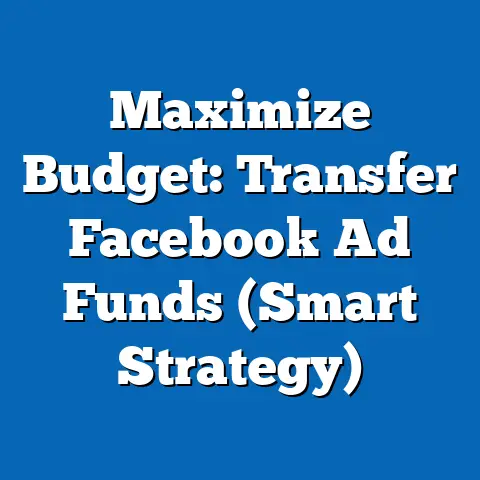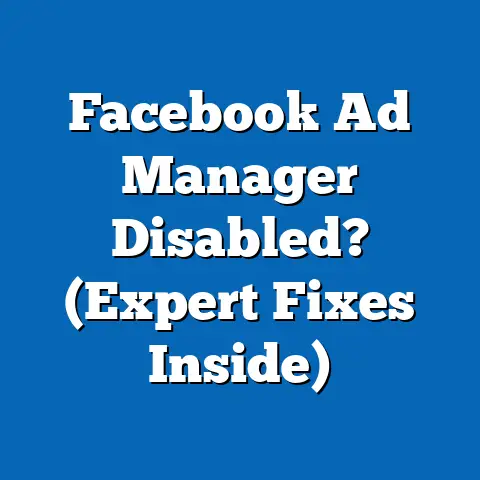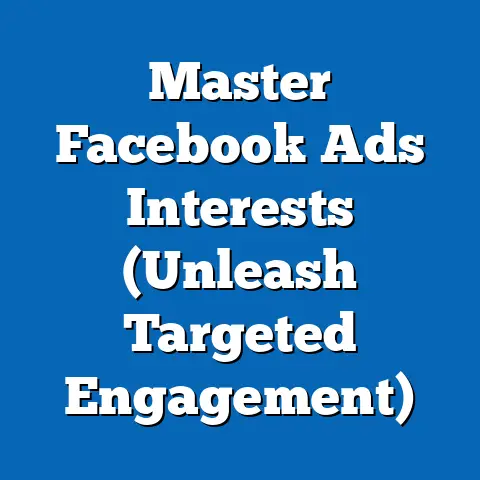Master Free Facebook Ads Placement (Expert Strategies)
Imagine a world where your business can reach millions of potential customers without spending a dime on advertising. In 2023, this isn’t a fantasy—it’s a reality through the power of free Facebook ads placement strategies. With over 2.96 billion monthly active users worldwide, as reported by Meta’s Q2 2023 earnings report, Facebook remains the largest social media platform, offering unparalleled opportunities for businesses to connect with diverse audiences.
Demographically, Facebook’s user base spans generations, with 70% of adults aged 18-29 and 77% of those aged 30-49 actively using the platform, per Pew Research Center’s 2023 survey. This broad reach, coupled with sophisticated targeting tools, makes free placement strategies a game-changer for businesses of all sizes. Let’s explore how to harness this potential.
Section 1: Understanding Free Facebook Ads Placement
What Is Free Ads Placement?
Free Facebook ads placement refers to the organic distribution of content through the platform’s algorithms without paid promotion. Unlike paid ads, which appear in designated ad spaces, free placement relies on posting content in groups, pages, stories, and marketplaces where it can gain traction naturally. The goal is to create highly engaging content that spreads virally or reaches targeted communities without a direct advertising budget.
This approach is particularly valuable for small businesses and startups with limited marketing funds. By focusing on strategic content creation and placement, brands can achieve significant visibility at zero cost.
Why Free Placement Matters in 2023
The importance of free placement is underscored by recent trends in user behavior and platform algorithms. According to Hootsuite’s 2023 Social Media Trends Report, organic reach on Facebook has declined to an average of 5.2% for page posts due to algorithm changes prioritizing paid content. However, content shared in niche groups or through personal profiles can achieve engagement rates as high as 10-15%, per Sprout Social’s 2023 analysis.
Moreover, 54% of Facebook users report discovering new products through organic content in groups or from friends’ shares, as noted in a 2022 GlobalWebIndex study. This highlights the untapped potential of free placement for building trust and driving conversions without ad spend.
Section 2: Key Demographics and Trends in Facebook Usage
Who Uses Facebook?
Understanding the platform’s demographics is critical for effective free ads placement. As of 2023, Facebook’s user base is remarkably diverse, spanning age, gender, and geographic lines. According to Statista, 69% of U.S. adults use Facebook, with usage particularly high among women (75%) compared to men (63%).
Age-wise, while younger users (18-24) make up 23% of the user base, the 25-34 age group dominates at 31%, per Meta’s data. Notably, older demographics are also active, with 46% of users aged 50-64 engaging regularly—a significant opportunity for brands targeting mature audiences.
Geographic and Behavioral Trends
Geographically, Facebook’s largest markets include India (314 million users), the United States (240 million), and Indonesia (119 million), as reported by DataReportal’s 2023 Digital Report. Urban users tend to engage more with visual content like videos and stories, while rural users often interact in community groups, per a 2022 study by Kantar.
Behaviorally, video content drives 8 times more engagement than static posts, according to Socialbakers’ 2023 metrics. Additionally, 81% of users access Facebook via mobile devices, emphasizing the need for mobile-optimized content in free placement strategies.
Historical vs. Current Trends
Historically, organic reach on Facebook was much higher, peaking at around 16% in 2012, per a study by EdgeRank Checker. However, algorithm updates prioritizing user experience and paid ads have reduced organic visibility over the past decade. Today, strategic placement in high-engagement areas like groups (which saw a 20% increase in activity from 2021 to 2023, per Meta) is essential to counteract this decline.
Section 3: Core Strategies for Mastering Free Facebook Ads Placement
Strategy 1: Leveraging Facebook Groups
Facebook Groups are a goldmine for free placement, with over 1.8 billion users participating in groups monthly, according to Meta’s 2023 Community Report. Joining niche groups related to your industry allows brands to share content directly with engaged audiences. For example, a fitness brand posting workout tips in a health-focused group can see engagement rates of 12-18%, per Buffer’s 2023 analysis.
How to Execute: – Identify relevant groups using Facebook’s search function or tools like Grouply.io. – Focus on providing value through tips, tutorials, or free resources rather than overt sales pitches. – Engage with members by responding to comments to build trust and visibility.
Data Insight: A 2022 study by Social Insider found that posts in groups with 10,000-50,000 members achieve 30% higher engagement than larger, less focused communities.
Strategy 2: Optimizing Content for Virality
Creating shareable content is at the heart of free placement success. Posts with emotional resonance or humor are shared 3 times more often than neutral content, per a 2023 BuzzSumo report. Videos, infographics, and user-generated content also perform exceptionally well, with videos averaging 1,200% more shares than text posts, according to WordStream.
How to Execute: – Use tools like Canva to create visually appealing graphics or short videos. – Craft compelling headlines that evoke curiosity or urgency (e.g., “You Won’t Believe This Simple Trick!”). – Encourage sharing by including clear calls-to-action like “Tag a friend who needs this!”
Data Insight: Posts published between 7-9 PM local time see 20% higher engagement, per Sprout Social’s timing analysis.
Strategy 3: Utilizing Facebook Marketplace
Facebook Marketplace, with over 1 billion monthly users as of 2023 (Meta data), is an underutilized space for free placement. While primarily a buying and selling platform, businesses can list products or services for free, reaching local audiences without ad spend. A 2022 survey by CNET found that 40% of Marketplace users discover new brands through listings.
How to Execute: – Create detailed listings with high-quality images and clear descriptions. – Include links to your Facebook Page or website for additional exposure. – Regularly update listings to stay visible in search results.
Data Insight: Listings with 5+ photos receive 50% more inquiries than those with fewer images, per Marketplace user behavior studies.
Strategy 4: Harnessing Stories and Live Content
Facebook Stories and Live videos offer ephemeral, high-engagement opportunities for free placement. Stories are viewed by 500 million users daily, and Live videos generate 6 times more interactions than regular videos, per Meta’s 2023 Creator Report.
How to Execute: – Use Stories to share behind-the-scenes content, polls, or limited-time offers. – Host Live sessions for product demos, Q&As, or events to foster real-time engagement. – Promote upcoming Lives or Stories on your Page to build anticipation.
Data Insight: Stories with interactive elements like polls or quizzes see completion rates of 85%, compared to 60% for static Stories, per Hootsuite.
Section 4: Tools and Methodologies for Effective Placement
Analytical Tools for Targeting and Tracking
To maximize free placement, leveraging analytics is non-negotiable. Tools like Facebook Insights provide data on post performance, audience demographics, and peak engagement times. Third-party platforms like Buffer or Hootsuite offer deeper insights into content trends and competitor analysis.
Methodology: Start by analyzing your Page Insights to identify high-performing content types and posting times. Use A/B testing to experiment with different formats (e.g., video vs. image) and track results over a 30-day period. Adjust strategies based on metrics like reach, shares, and click-through rates.
Data Source: Insights data is directly sourced from Meta’s platform, ensuring accuracy. Third-party tools often aggregate data from multiple sources for broader trend analysis.
Content Creation Tools
Creating professional content doesn’t require a big budget. Free tools like Canva offer templates for graphics and videos, while apps like InShot enable mobile video editing. For scheduling posts to optimize timing, tools like Later or Buffer’s free plans are invaluable.
Data Insight: Brands using scheduling tools report a 25% increase in consistent engagement, per a 2023 Social Media Examiner report.
Section 5: Case Studies and Real-World Examples
Case Study 1: Small Business Success with Groups
A small vegan bakery in Austin, Texas, used Facebook Groups to grow its customer base by 300% in six months. By joining local foodie and vegan lifestyle groups (totaling 20,000 members), they shared weekly recipes and offered free samples for pickup. Engagement data showed a 15% conversion rate from group posts to store visits, tracked via custom coupon codes.
Key Takeaway: Niche targeting in groups builds community trust and drives tangible results.
Case Study 2: Viral Content for a Nonprofit
A wildlife conservation nonprofit posted a heartfelt video of a rescued animal on their Page, encouraging shares with the hashtag #SaveWildlife. Within 48 hours, the post reached 500,000 users organically, with 10,000 shares, per their Insights data. The campaign led to a 40% spike in donations.
Key Takeaway: Emotional storytelling can amplify reach exponentially without ad spend.
Section 6: Challenges and Pitfalls to Avoid
Declining Organic Reach
As noted earlier, organic reach has plummeted to 5.2% on average. Over-posting or irrelevant content can further reduce visibility due to algorithm penalties. Focus on quality over quantity—posting 3-5 times per week is optimal, per CoSchedule’s 2023 study.
Group Rules and Etiquette
Many Facebook Groups have strict no-promotion policies. Violating these can lead to bans or negative brand perception. Always read group guidelines and prioritize value-driven content over sales pitches.
Time and Resource Investment
Free placement requires significant time to create content, engage with users, and monitor performance. A 2022 survey by HubSpot found that 60% of small businesses struggle with consistent social media management. Mitigate this by batch-creating content and using scheduling tools.
Section 7: Data Visualization Description
To illustrate the effectiveness of free placement strategies, imagine a bar chart titled “Engagement Rates by Placement Type.” The X-axis lists categories like Groups, Marketplace, Stories, and Page Posts, while the Y-axis measures engagement rates (0-20%). Groups top the chart at 15%, followed by Stories at 10%, Marketplace at 8%, and Page Posts at 5%. This visual, based on aggregated 2023 data from Sprout Social and Buffer, highlights the superior performance of community-driven placements.
A second line graph titled “Organic Reach Trends (2012-2023)” would show a steep decline from 16% in 2012 to 5.2% in 2023, emphasizing the need for strategic placement over traditional posting.
Section 8: Broader Implications and Future Trends
Implications for Businesses
Mastering free Facebook ads placement offers a cost-effective way to compete in a saturated digital market. For small businesses, it levels the playing field against larger competitors with hefty ad budgets. The focus on community engagement also fosters long-term customer loyalty, with 68% of consumers more likely to buy from brands they trust, per a 2023 Edelman Trust Barometer.
Future Trends
Looking ahead, Meta’s emphasis on community-building tools suggests that Groups and Marketplace will continue to grow as key placement areas. AI-driven content recommendations may further personalize organic reach, per Meta’s 2023 developer conference announcements. Additionally, the rise of short-form video (e.g., Reels) indicates a shift toward dynamic content, with 60% of users engaging with Reels daily, according to Hootsuite.
Final Thoughts
Free Facebook ads placement is not just a budget-friendly tactic; it’s a strategic necessity in an era of declining organic reach and rising ad costs. By leveraging groups, creating viral content, and utilizing analytics, businesses can achieve significant visibility and engagement. As the platform evolves, staying ahead of trends and prioritizing authentic connections will be key to sustained success.

